species
- Barbastella
- Eptesicus
- Myotis
- Nyctalus
- Pipistrellus
- Vespertilio
Barbastelle bat Barbastella barbastellus
The genius Barbastella comprises only two species worldwide, with only barbastelle bat (Barbastella barbastellus) occurring in Europe.
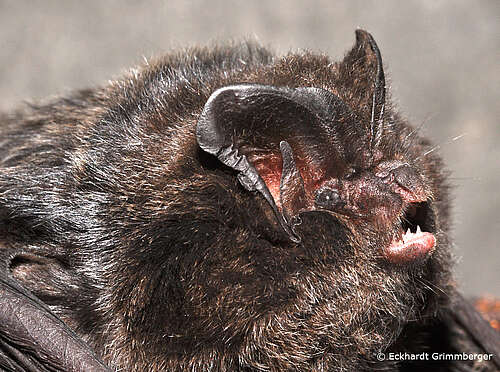
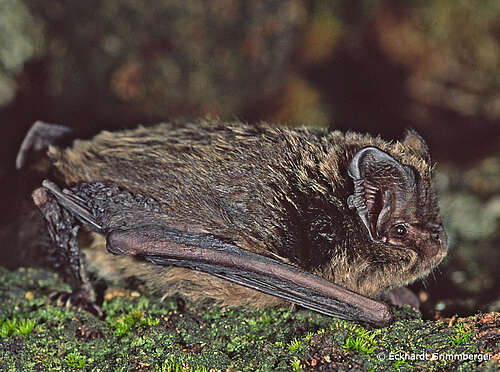
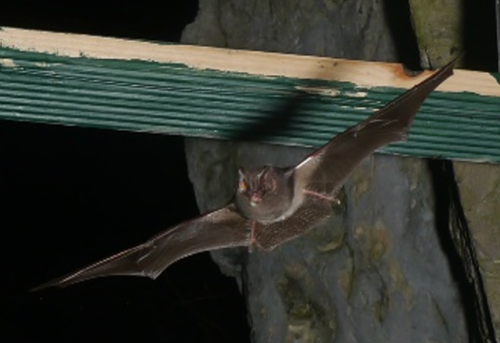
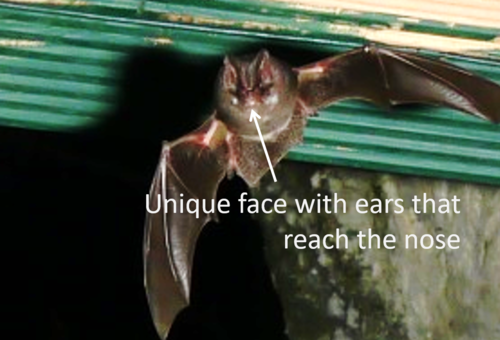
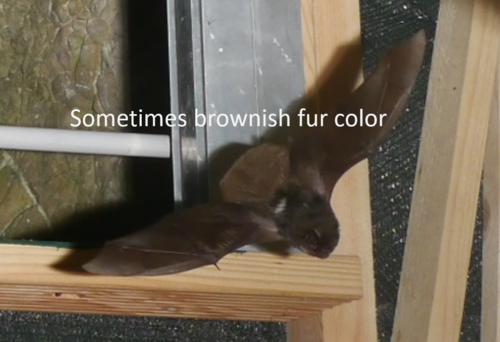
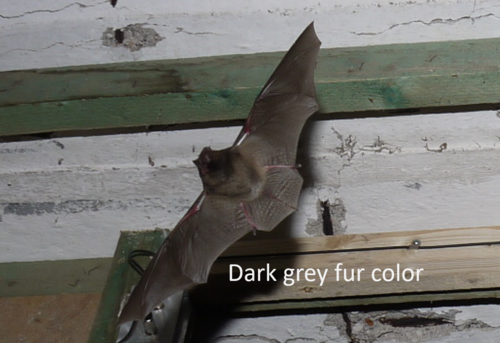
characteristics
| habitat description | Mostly found in old deciduous forests with abundant dead wood, but also regularly recorded in pine forests, for example. |
| quarters | Nursery roosts classically behind bark solution of old trees, but also rock crevices and behind shutters, boarding on houses. Mostly 10 - 20 females in groups (May - August). Males solitary or in small groups outside of the nursery roost. Hibernates in mixed groups also with other species, but prefers relatively cool sites, therefore often in the entrance area of caves, tunnels, bunkers and cellars. |
| reproduction | Mating in fall, possibly winter. Swarms at hiberation sites. Birth of young usually in June. Twin births more common than in other species. Young independent after about 6 weeks. Sexual maturity still in 1st year. |
| size | - Head-torso length: 45 - 56 mm. - Forearm length: 36 - 44 mm - Wingspan: 260 - 295 mm |
| weight | 7 – 11 g |
| color/fur | Schwarzbraun, relativ lang und dicht, wirkt aufgrund heller Haarspitzen wie bereift. Gesicht und Ohren schwarz. |
| nose shape | Blackish brown, relatively long and dense, appearing frosted due to light hair tips. Face and ears black. |
| ear shape | - Broad, directed forward, surround most of the face. - Outer ear rim with a conspicuous, button-like skin flap about in the middle, appearing as if set on (not present in all animals). - Earlobe (tragus) about half as long as ear, triangular and with long, rounded tip |
| wing shape | Relatively narrow and long. |
| flight | Slow fluttering flight characterized by extreme agility. |
| ultrasonic calls | Typically two call types or a mixture of them: 1. a short, loud constant-frequency call presumably serving for long-distance orientation, which after about 1 - 1.5 ms changes into a frequency-modulated call of 4 - 7 ms and drops from 35 to 28 kHz (main frequency at 35 kHz); 2. a longer, quiet constant-frequency call presumably serving for close orientation, which then drops as a frequency-modulated call from 43 to 33 kHz (main frequency at 43 kHz). Relatively regular calls that sound "rattling or castanet-like" and can thus be distinguished from Myotis species such as the greater mouse-eared bat. |
| endangerment | Primarily due to loss of roosts when older trees with cavities are not preserved or buildings are renovated. IUCN (2016): near threatened Red List of Germany (2020): critically endangered |